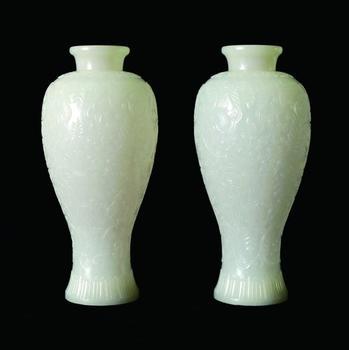Business Shirt,High Quality Business Shirt,Business Shirt Details, CN Jiangyin Yiqifeiyang Apparel Co., Ltd. , https://www.jyyqfy.com “Thin curbs are engraved, lighter than the crest of a feather, and there is nothing in the hand, and there is nothing in sight.†This poem was written by Emperor Qianlong of the Qing Dynasty and depicts the fineness and lightness of the thin-tire jade. It is said that the Qianlong emperor liked the thin fetal jade device very much, but because of its low success rate, the Emperor Qianlong wrote a poem for every success.
“Thin curbs are engraved, lighter than the crest of a feather, and there is nothing in the hand, and there is nothing in sight.†This poem was written by Emperor Qianlong of the Qing Dynasty and depicts the fineness and lightness of the thin-tire jade. It is said that the Qianlong emperor liked the thin fetal jade device very much, but because of its low success rate, the Emperor Qianlong wrote a poem for every success.
Most of the thin fetal jade vessels are vessel vessels, named because of their thin walls. Historically, the development of thin fetal jade has experienced two interruptions. According to legend, when Genghis Khan expeditioned, it brought back the thin jadeite and artisan of the Western Regions and was once very popular. The craftsmen of this generation did not cultivate new ones. After their death, this craft broke. Until the Qing Dynasty, the Qianlong emperor preferred this style of jade, and set up a thin tire of Xifan. The production process of thin fetal jade is complicated, time-consuming and labor-consuming. Shortly after Qianlong’s death, this process was lost again. Until the 1930s, Pan Pingting, a teacher of the North School, devoted himself to studying the restoration of this process.
The thin tire process is academically called the "Dhotdostan process." Sruddostan is located in northern India, including Kashmir and western Palestine, and its jade materials are mostly in southern Xinjiang and Saitama, Yerba horns. These jades are very local cultural features, some embedded in the wall of gold, silver filaments and red, green, yellow, blue and other gemstones or glass, ornamental patterns are mostly plant leaves, with lotus root, passion flower It is mainly clematis. In addition to these decorative techniques, the grinding technique is also used. The carcass is thin and thin, and there is a saying that "Jade craftsmanship is incomparable, water mill grinds thin as paper".
To make a thin fetal jade device, a kind of craftsmanship called gongs must be used. In ancient times, it was a stunt. After the jade material was hollowed out, the thinnest part of Yubi was only 12mm thick. It is said that jade carving divisions dig multiple jade materials, buyers have to pay multiple gold. This shows that the process value is high.
The thin-tire jade material is very particular about the use of white jade, and the texture must be very dense, can not be loose, can not be cracked, because the vibration caused by the machine rotation process, may leak in the thin, fried, cracked It is very rare.
The contemporary Chinese jade master and the master of arts and crafts of China, Liu Chaoguo, is good at carving kiln vessels, and is particularly good at sculpting some of the vessels of the court. It is a famous Northern School faction master and leader of the North School jade sculpture. willow". His jade carving skills inherited the essence of the Ming and Qing palace jade carvings, and gave a new era of aesthetic style. He once produced a thin, double-ear tire bottle that won the Gold Award for Chinese Arts and Crafts Innovation. This piece is made of white jade and weighs only 259 grams. The jade wall is as thin as a dragonfly's wings, and it feels nothing in your hand. However, the weight of raw materials at that time was nearly 40 kilograms, and the weight of finished products was equivalent to one-sixteenth of the raw materials.
Because of its complicated craftsmanship and exquisite craftsmanship, the rare tires are notoriously successful. Their artistic value and aesthetic value have been widely recognized by experts and collectors.
June 13, 2020